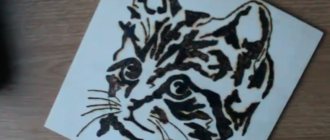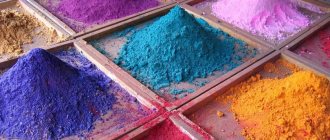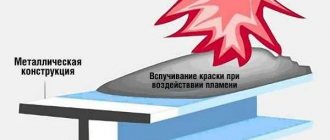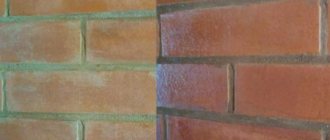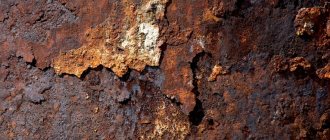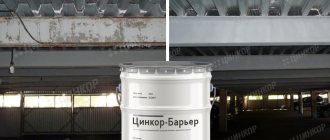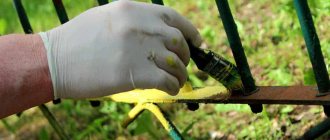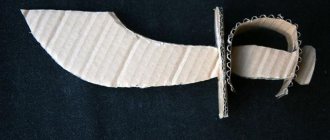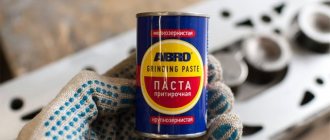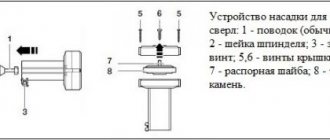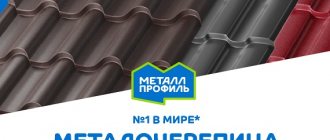Having a structure such as a fireplace or stove in the house, it is necessary from time to time to tidy up not only their internal chimney ducts, but also the appearance of these structures.
Fireplace painted with red heat-resistant paint
But in order not to get into an unpleasant situation and not to do wasted work, you need to know which paint is most suitable for stoves and fireplaces.
Advantages and disadvantages of heat-resistant paint
When choosing a material to cover a fireplace or stove, consumers most often give preference to paint.
This is due to a number of advantages of this product:
- Wide choice of colors;
- Heat resistance. The paint can withstand temperatures up to +1000°C;
- Strength and durability;
- Protection against oxidation;
- The paint does not lose its properties after ten years.
The disadvantages of paint include:
- Unpleasant odor;
- Toxicity;
- Drying time.
Manufacturers
Currently, specialized stores have a very large selection of heat-resistant paints and varnishes, which are produced by different manufacturing companies. Products are represented by a wide range of both Russian and foreign production. We have already described the most popular types of paints suitable for brick and metal products. Now let's look at their characteristics.
Enamel KO-8101
The heat resistance of this paint ranges from 400 to 800°C. It is considered universal, because It can be coated on different surfaces: brick, metal, concrete.
Heat-resistant anti-corrosion enamel KO-8101
For metal products, experts advise purchasing the anti-corrosion compound KO-8101. Before coating, it is not necessary to carry out preparatory procedures. When heated, such paint does not form any harmful fumes, so it is considered an absolutely safe product. A very important advantage of this composition is the fact that you can work with it even at sub-zero temperatures. Such paints are characterized by high protection rates and a wide variety of colors, so everyone will find an option here to their liking. The manufacturer provides a guarantee for its products for a period of 15 years.
This type of paint is produced by many domestic and European companies, “Termika”, “Karst” and others.
All manufacturers use the same manufacturing technology. Only the color scheme may differ.
Solvents used to create paint are xylene and toluene.
The composition consumption for a three-layer surface coating is 120÷240 g/m². The drying period of the coating at a temperature of 150±2 °C is no more than half an hour, at 20±2 °C - no more than two hours. This enamel can be applied by spraying using a spray gun, or manually - with a roller or brush, in 2-3 layers, with each layer drying for 0.5 to 2 hours, depending on the ambient temperature.
Enamel KO-811
Heat-resistant enamel KO 811
This heat-resistant enamel is used for painting steel, cast iron, titanium surfaces, the heating temperature of which can reach 400°C. The paint looks like a suspension, which contains pigments dissolved in silicone varnish.
Usually KO-811 is sprayed. To do this, the enamel must be diluted with a stabilizer 100:6 for white paint and 100:7 for other colors. The mixing process takes place shortly before application.
The finished composition must be consumed within 24 hours.
The enamel coating must be well cleaned of dirt and grease. In order to rid the surface of all these traces, solvents are used.
The solvents used for this enamel are R-5A, toluene and xylene. The paint can be diluted: KO-811 by 30÷40%, KO-811K (white) by 70÷80%, other colors by 40÷50%. Enamel consumption varies from 100 to 250 g/m², depending on the color. The drying time of the painted surface at temperatures of 200, 150 and 20 degrees is no more than 2 hours. This heat-resistant paint is produced by Termika, NPF Emal LLC and other companies.
Enamel KO-168
KO-168 enamel with silicone varnish
This type of composition is intended for use at temperatures not exceeding 150°C. This means that this enamel can be used to cover brick products and metal parts that are located at a sufficient distance from the firebox. The functions of this enamel are not only protective, but also decorative. Manufacturers offer various colors of KO-168 enamel.
Subject to all operating requirements, such a composition will act as excellent protection for any material. This is due to the fact that such a coating is characterized by high moisture resistance and frost resistance. In addition, it is not afraid of exposure to ultraviolet rays, which means the enamel will retain its original shade for a long time.
KO-168 enamel is also a suspension containing pigments, fillers and additives mixed with silicone varnish. Paint consumption depends on the chosen color: for red and white enamel – 150 g/m²; for yellow – 180 g/m²; for blue – 140 g/m²; for brown, blue, light green, beige – 130 g/m²; for green – 120 g/m²; for black – 80 g/m².
KO-168 enamel is produced in ready-to-use form. If it is necessary to dilute it, toluene or xylene solvents are used. The drying time of enamel at a temperature of 20 ± 2 °C is about a day. If a metal surface is to be painted, it must be cleaned of various contaminants and degreased - also with xylene, solvent or acetone, and then the surface is wiped dry. Painting with this composition can be carried out at air temperatures from -30 to +40 degrees.
Heat-resistant paints "Tikkurila"
Heat-resistant paint Tikkurila Termal black
Tikkurila is a famous company from Finland, whose main specialization is the production of various paints and varnishes. The company's product range includes black and silver shades.
Silver enamel consists of varnish and aluminum powder. This mixture is designed to be heated up to 900°C; therefore, it can be used for painting metal surfaces. You can coat stoves that are located both in the house and on the property with this paint. This is due to the fact that Tikkurila paint tolerates environmental influences well.
Black paint is only suitable for surfaces heated to 400°C. The composition is applied by spraying or manually with a brush.
Enamel "Certa"
Certa heat-resistant enamel up to 700°C
Certa is a domestic manufacturer that produces heat-resistant paint for metal structures, since the composition is characterized by high anti-corrosion properties.
The paint well protects both individual parts of the structure and the entire product from moisture, overheating and aggressive influences. Temperature range - -60°С - +90°С. The composition, which is available in cans, is applied with a brush, and in aerosol cans it is sprayed.
Types of heat-resistant paints
All paints offered by modern industry can be divided into three types:
Organosilicon. This product is a high quality mixture, as it contains organic resins. These paints can be used for exterior finishing work and as a coating for a stove or fireplace.
Paints have a number of advantages:
- High strength;
- Increased adhesion;
- Durability;
- Moisture resistant;
- Heat resistance.
Acrylic based paints. This product is dispersive and is designed for temperatures not exceeding +400°C. Penetrating deep into the pores of the surface being painted, acrylic paint creates a durable protective film.
Before use, the paint should be diluted with water until the desired consistency is obtained. The material is applied to the surface with a brush or roller. For maximum effect, the paint should be applied in several layers with a break of 24 hours. Acrylic compounds are odorless.
Alkyd emulsions. Alkyd paints contain dye, alkyd varnish and solvent. Antifungal agents, substances that slow down the combustion process and marble dust can be used as additional components. Alkyd compositions are designed for temperatures not exceeding +100°C.
Varieties
Based on the maximum temperature that heat-resistant paint for stoves can withstand, the following types are distinguished:
- heat-resistant enamel for metal: the maximum temperature it can withstand is 80°C;
- acrylic and alkyd paint: its maximum is 100°C. It contains special pigments. After the enamel is applied to the surface, it does not turn yellow, its color does not fade or fade. Most often it is used to cover iron heaters in the bathhouse. This type is produced in the form of an aerosol, which is very convenient for coating;
- enamel made from epoxy, acrylic, polyurethane compounds with heat resistance up to 200°C;
- heat-resistant metal paint for furnaces with an ethyl silicate or epoxy ester base with metal powder, which tolerates high temperatures well - up to 400 ° C;
- silicone paint: zinc or aluminum powder is added to it: this type of coating can withstand temperatures up to 650°C. It is most often produced in the form of a spray.
Photos of the best heat-resistant paints for stoves and fireplaces
Preparing the oven surface for painting
The process of preparing the stove for painting is simple and straightforward, but it must be carried out in full, otherwise the consequences will be dire. It is important that pure metal remains under the paint layer without any additional impurities.
The process looks like this:
- Thoroughly clean the surface with a wire brush.
- Remove remaining oxides with a solution of sulfuric acid with a concentration of 5%.
- Wash off the acid with a mixture of laundry soap.
- Degrease the metal surface using any available method - usually a solvent.
- Paint the surface with paint.
There is nothing complicated in the process itself, but you should pay attention to the details, since this is where mistakes are made. This process may not seem like a big deal, but if you don't do it, the paint will start to fall off soon enough!
Conclusion
Heat-resistant paint is the best option for painting the surface of the stove and its individual parts. Due to its resistance to high temperatures, this coating will reliably protect the oven device from dust and moisture. When choosing heat-resistant paint, it is worth considering the material on which it will be applied.
Products for brick and metal surfaces differ in composition and other characteristics. The construction market offers a huge selection of color palettes of heat-resistant paint compositions that will please even the most picky stove owner.
Functions of the paint and varnish coating of a brick heater
Painting a stone heating device is carried out for the following purposes:
- protection of the stove surface from absorbed contaminants, and clothing from brick dust upon contact with brickwork;
- facilitating daily care, that is, maintaining the necessary sanitary and aesthetic condition;
- increasing the decorative design class of the unit;
- adapting the design of the heating device to the existing interior.
Brick heaters coated with colorless heat-resistant varnish
*
If the bricklaying was done without sorting the stone by color, then painting the body with a heat-resistant paintwork material (paint and varnish material) of one or more colors will correct the situation. But even a stove finished with face brick is transformed after applying, for example, a colorless paint coating, which gives a richness and matte hue to the stonework.
How to paint a metal stove?
The process of painting a metal stove is similar to similar work with other materials. Before starting work, make sure the quality of the paint - check the expiration date, the absence of lumps, additional impurities, etc. Mix the paint thoroughly, making movements not only in a circle, but also kneading the paint from the bottom.
It is necessary to paint a metal stove in an even, uniform layer. Pay attention to corners and seams, as these are the places where untreated surfaces most often remain. If you do not want to stain the surrounding area of the oven, then use cellophane and masking tape.
- You can use a brush to paint the stove.
- A can of spray paint is perfect for fittings.
